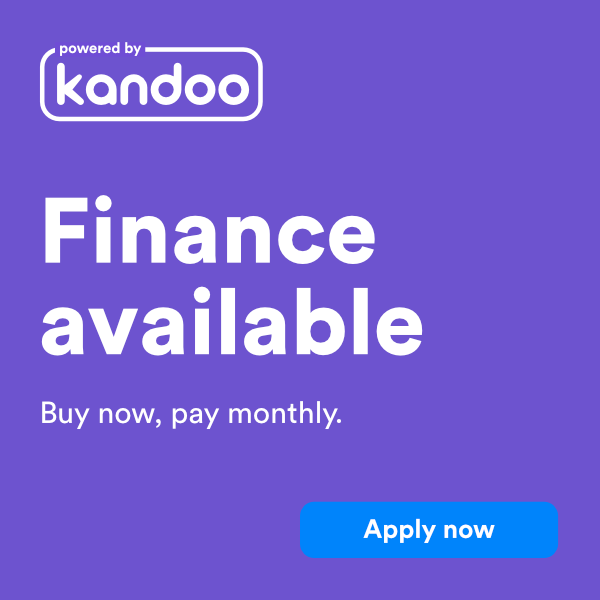Table of Contents
Conservatories are a popular UK home improvement option. Offering extra living space, a smooth indoor-outdoor transition, and added curb appeal, they are usually a sound investment.
In most cases, a conservatory will add value to the home. But there are a couple of exceptions. The main reasons a conservatory wouldn’t add value to your property are that there is no further value to add to the property or that the conservatory has the opposite effect and reduces the value of your property due to poor design or construction.
That’s why you must choose a conservatory that enhances your property, and ensure it is correctly installed.
In this blog, we’ve distilled our 25+ years of experience providing and installing conservatories across Greater Manchester and beyond. Read on to find out more.
How a conservatory can add value to your home?
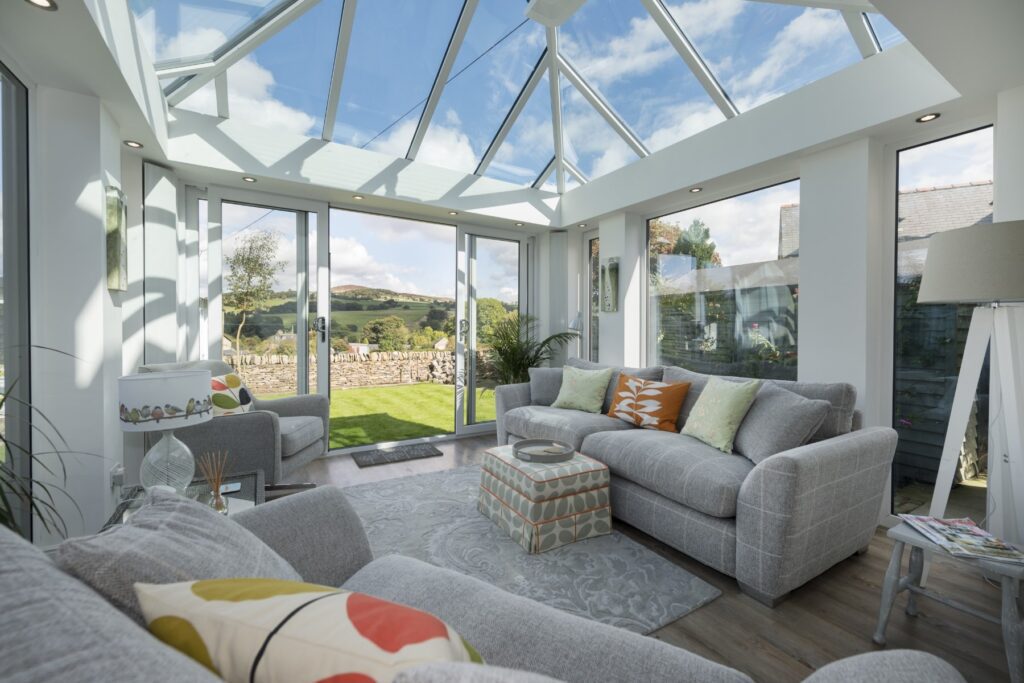
Extra Living Space
The primary way a conservatory can add value to your home is by increasing your living space. If designed and installed correctly, they can be multi-purpose rooms, giving you more living space without needing costly extension to your main property. Whether you are looking for a sunroom, playroom or even a home office, a conservatory can fit the bill.
This versatility is very attractive to potential buyers who are seeking comfortable spaces that they can adapt to suit their needs.
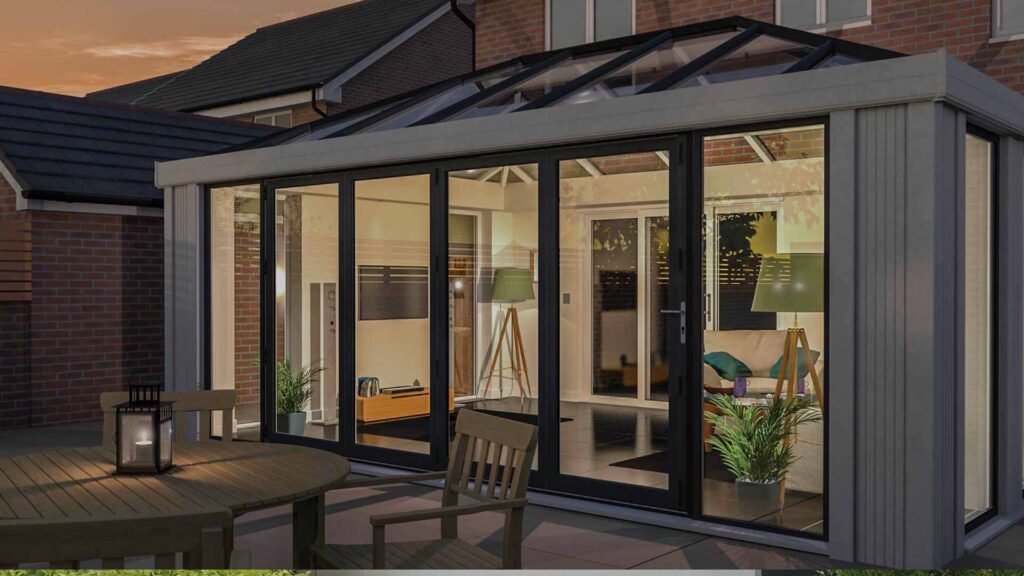
Curb Appeal
Conservatories at their best can be beautiful structures, either blending into your existing architecture or making a statement. They are inviting places where you want to spend time and can even be the deciding factor in a buyer choosing your home over a similar property.
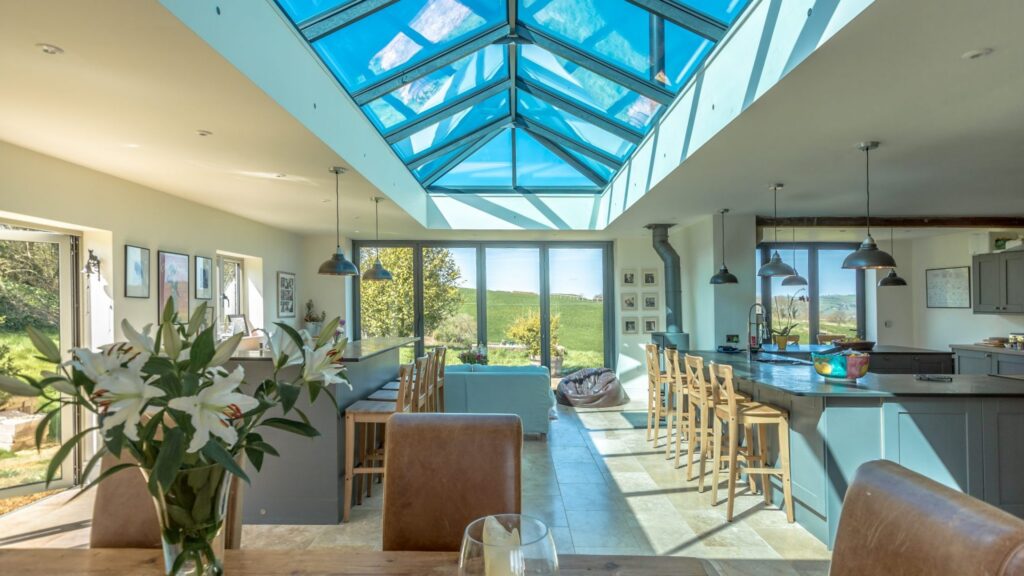
Natural Light
One of the reasons conservatories are enticing is that they are full of natural light, which floods through your home, creating a bright and airy atmosphere not just in the conservatory itself but throughout the property.
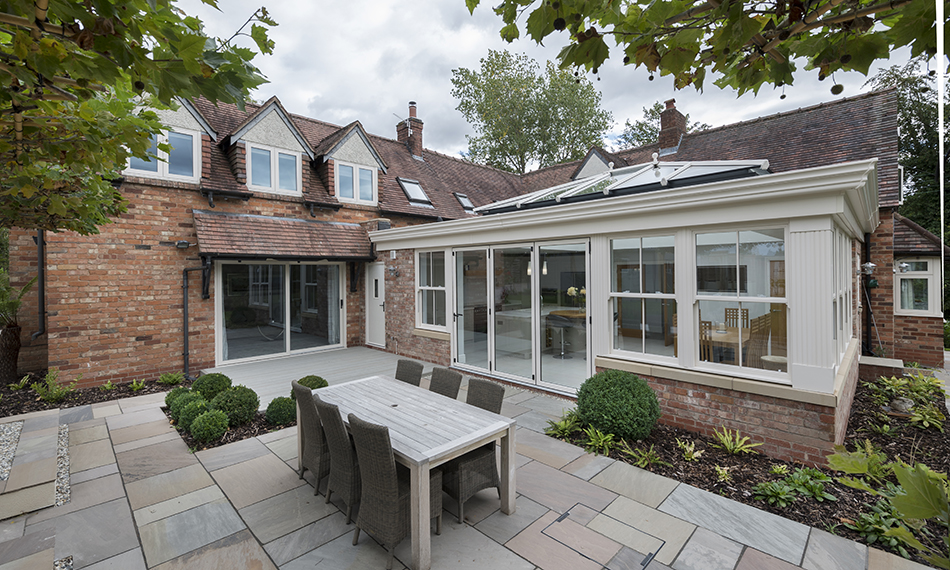
Indoor/Outdoor Living
This leads us to the trend for indoor/outdoor living. A conservatory can provide a smooth transition from your home to your garden or patio area. This aspect of conservatories is a big selling point in urban areas with small gardens and not a lot of green space.
Is a conservatory a good investment?
Adding a conservatory to your property is usually a good investment. Not only do you acquire an extra living space with far less disruption than a traditional extension, but they are more cost-effective too.
According to whatprice, an average house extension in the UK in 2024 costs between £1,400 and £3,000 per m² (excluding VAT). That equates to a small single-storey extension costing around £25,640 while a large double-storey extension can cost up to £86,300.
Compare that to adding a conservatory for approximately £10,000 and you can see the significant difference between the initial outleighs.
To truly represent a good investment, however, the return must exceed the cost.
Given that a conservatory can add value to your property, and reduce your heating bills and carbon footprint, if executed properly, nine times out of ten, a conservatory is an excellent investment.
There are a couple of scenarios where adding a conservatory to your home will not add value.
Ceiling Price
The ceiling price is the maximum amount your house will sell for. If your house has reached its ceiling price, you cannot add property value, no matter which home improvements you make.
You can calculate an approximate ceiling price by seeing what similar-sized and aged properties in your area have sold for recently. For an accurate ceiling price, though, get a valuation from a local expert.
If you sell shortly, you won’t see a return on your investment.
That does not mean that there aren’t other benefits that make adding a conservatory to your home a waste of time, but you should factor it into your budget.
For example, a conservatory might still be a great option if you are not planning to move within the next ten years and require more living space.
How much value will it add?
A conservatory can add 5-10% more to the value of your home, depending on your location and the specifications of the conservatory.
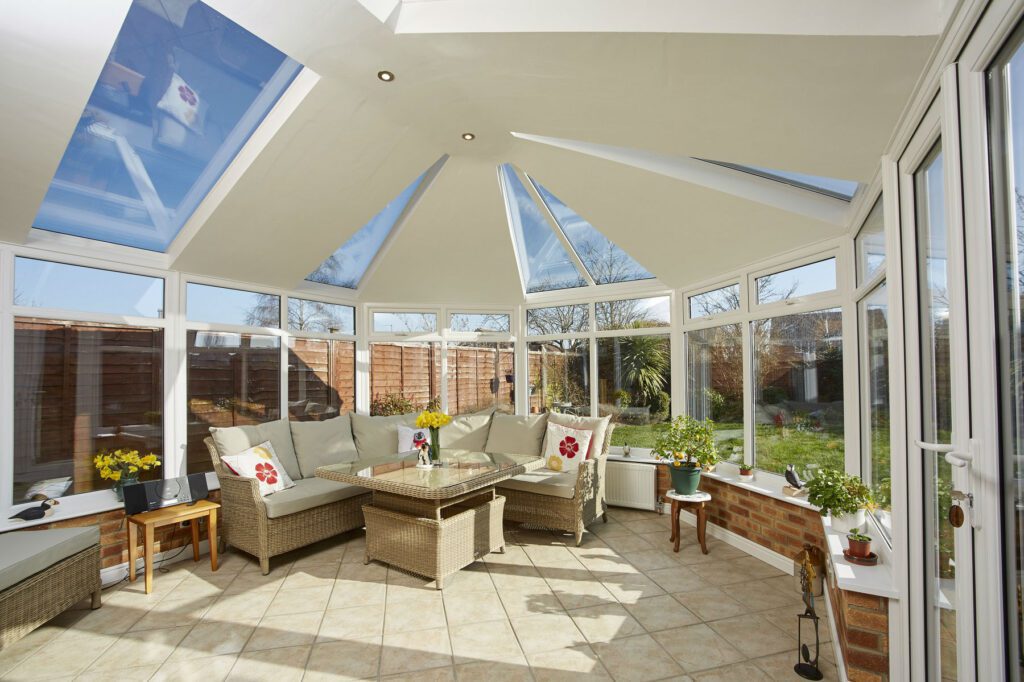
As above, the design of the conservatory will affect how much value it adds to the property. If you are likely to sell in the next few years, keep the design simple and classic, designed to appeal to a mass market.
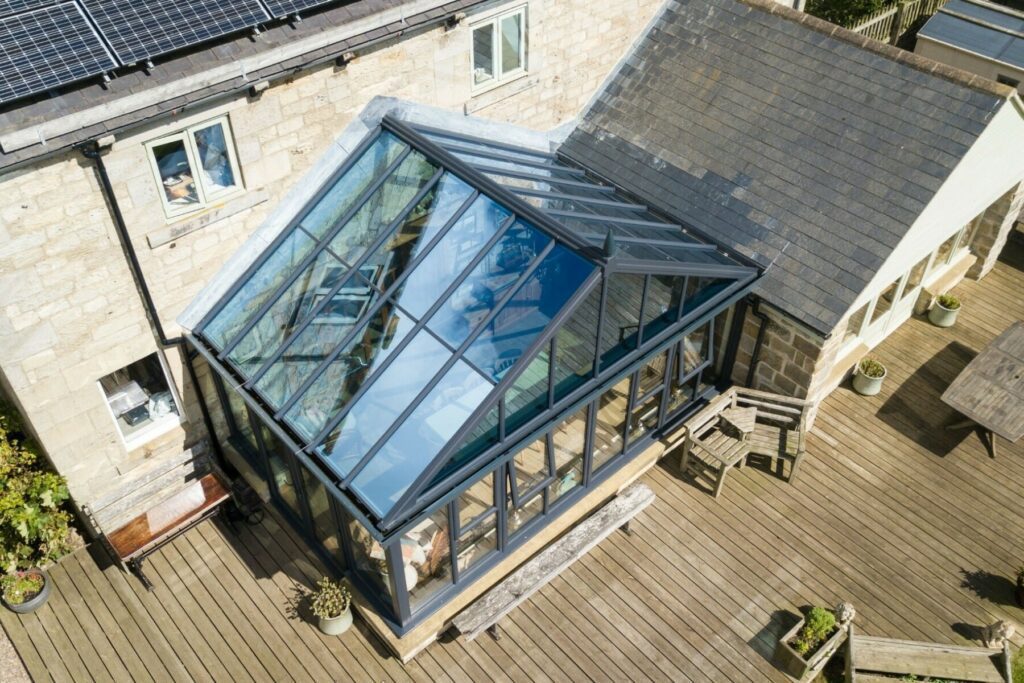
Features such as energy-efficient Planitherm glass or self-cleaning glass help futureproof your home and are attractive to potential buyers who know they won’t need to pay for replacements shortly after moving in.
What adds more value, a conservatory or an extension?
On average, an extension will add more value to your home than a conservatory – an estimated 5% – 20% versus the 5%-10% a conservatory adds. The value added depends on the type of extension, a single-storey extension may only add slightly more value than a conservatory of the same size, but a loft extension could add up to 20% value to your property.
However, there are benefits to adding a conservatory rather than an extension, including the significantly cheaper initial cost, the minimal disruption and not usually requiring planning permission.
Which you choose will ultimately depend on three factors:
- Your budget
- The space’s intended use
- Your taste and preference
Why Not Explore Our Conservatory Range?
Today’s conservatories are built using the latest technology to ensure better temperature control, no leaks, and a comfortable, private living space you can use all year round.
Pros and Cons of adding a conservatory:
Today’s conservatories are built using the latest technology to ensure better temperature control, no leaks, and a comfortable, private living space you can use all year round.
Pros of Adding A Conservatory:
- Allow an abundance of natural light to flow.
- They are usually significantly cheaper than an extension.
- Create a versatile, comfortable, year-round living space.
- Can increase property value by 5-10%.
- Increased curb appeal and overall appearance of your home.
- Improved well-being from more natural light and a better connection to the outdoors.
- Can be constructed quickly (around 2-3 weeks) with minimal disruption to your home and typically don’t require planning permission
- Usually given a fixed price upfront (whereas an extension can evolve)
Cons of Adding A Conservatory:
- They can get cold in the winter and too hot in the summer.
- The roof may leak.
- Heat loss can occur if the conservatory is not properly insulated.
- They require tricky cleaning and maintenance.
- They offer very little privacy.
- They may require planning permission in some cases.
- They may not suit all property types.
- You must factor in maintenance costs for older structures.
There are ways to add value through your conservatory, including:
Ways to add value | Description |
Match the conservatory style to the property. | Ensures a coherent look that won’t be off-putting to a potential buyer. |
Install double, triple or low-E glass. | Improves energy efficiency for lower heating bills and a smaller carbon footprint. |
Use high-quality materials. | Increases durability and buyer confidence. |
Add underfloor heating. | Enhances overall comfort and temperature control for year-round use. |
Keep the decor simple for a versatile room. | You will get the most out of your conservatory if it is suitable for multiple uses. Potential buyers will also appreciate this flexibility. |
Expert Advice from Estate Agents & Builders

Joules Estate Agents, say: “One reason why you may want to consider adding a conservatory to your property is the fact that they are an easy way to increase light. This is due to the walls and roof being completely transparent. For the same reason, it is also a wonderful way to connect the indoors and outdoors on sunny days.
Another reason is that not only do they add value to a property, but they also increase the chances of a sale. Exactly how much value can be added will depend on two things; the quality of the conservatory and the type of location of the property.
- Check whether you need planning permission
Consult your local estate agent to discover how much value you can expect to add
- Get quotes from more than one company specialising in conservatories
- Don’t skimp on the costs
- Make sure your conservatory blends with the rest of the property
- Be wary of installing a conservatory if you only have a small garden
- Pay particular attention to the aspect of your conservatory
- If you have a big budget and a big property, consider an orangery
- Treat the plants you grow in the conservatory as integral to the whole project
- Give careful thought to heat retention

Chris Longmore of Longmore Groundworks, says: “Depending on why you want a conservatory will probably play a big role in whether it would be worth it or not. 46% of people get a conservatory for more living space, 35% get it to fill the gap between the home and the garden, 31% of people are replacing an existing conservatory, 26% want to add value to their home and 16% want to get some more natural light.

“According to a Which survey, people listed what they would be most likely to change if they did it [build a conservatory] all again.
“33% said that they would get the self-cleaning glass, 28% said that they would get a bigger conservatory, 21% said they would change the roof to be made of glass, 16% would change the shape and 16% would use anti-glare glass.
“This should help you get a better idea of what you need to consider when getting a conservatory so you don’t make the same mistakes.”
Additional Insights: Practical Tips for Maximising Value
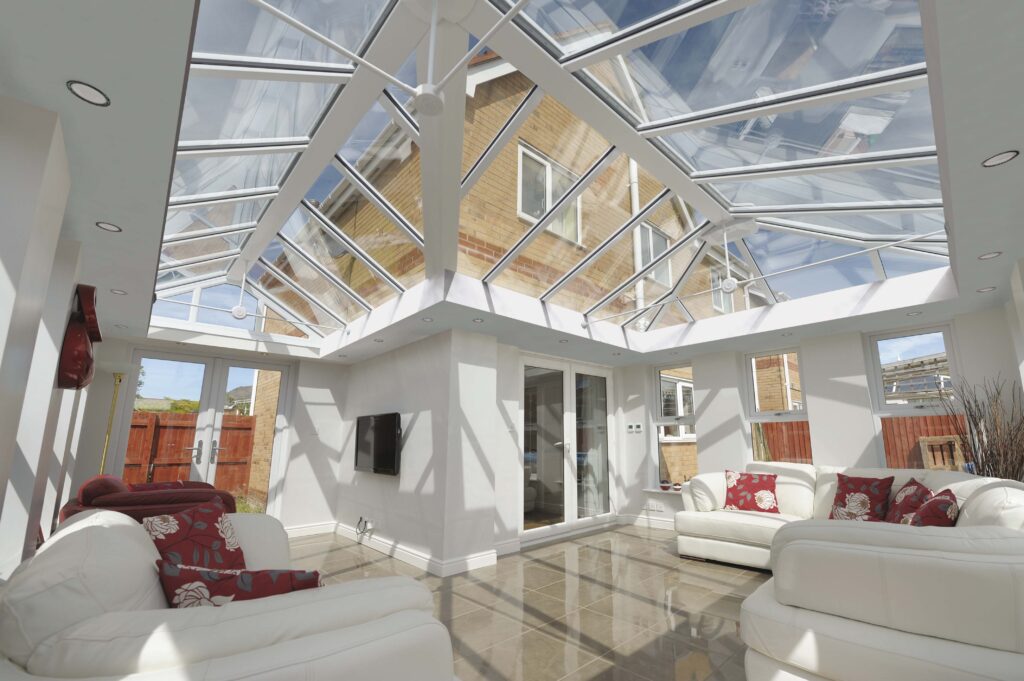
High-quality design and installation
A badly constructed conservatory can quickly become an eyesore, reducing curb appeal and lowering the value of your property.
The same is true of a conservatory that is not well-maintained and regularly cleaned. How to maintain and clean your conservatory can vary slightly, depending on the roof design and the materials used—glass vs. polycarbonate.
A high-quality conservatory, such as those offered by us, will be well-ventilated and insulated to ensure a comfortable temperature all year around. It will provide a smooth and attractive transition from your home to your garden and maximise natural light.
Pay attention to the details (the different styles) your choice of frames, and your choice of windows.
Several different shapes and styles of conservatories have varying complexity and price points.
The main types of conservatory are:
- Gable conservatory
- Lean-to conservatory
- Edwardian conservatory
- Victorian conservatory
- P-shape
- Bespoke Conservatories
Your choice of roof, windows, doors, and the number and configuration of windows will all affect the aesthetic and factor into the cost.
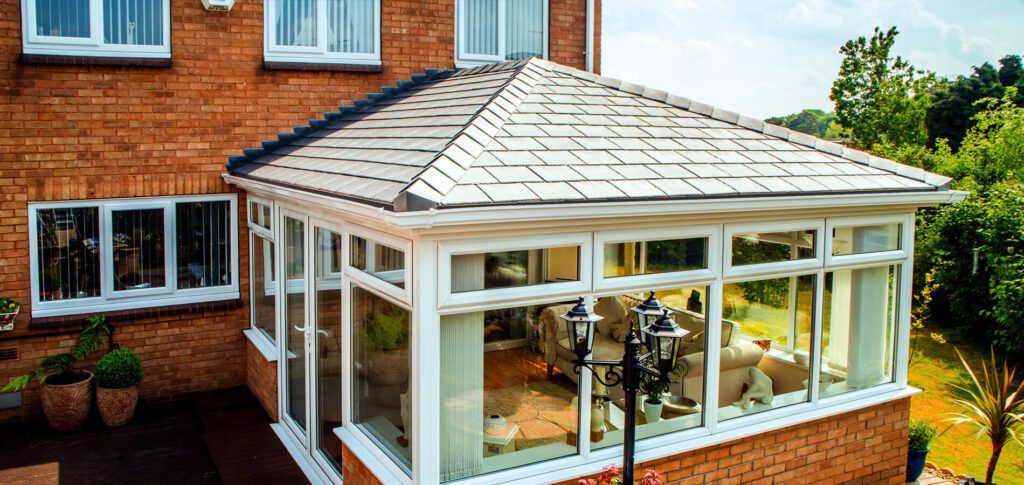
The cheapest isn’t always the best option
Conservatories can be expensive, and it can be tempting to plump for the cheapest option. Cheaper isn’t always the most cost-effective. If your conservatory is poorly installed or uses sub-par materials, you may pay more for costly repairs in the long run. It could also reduce your property value.
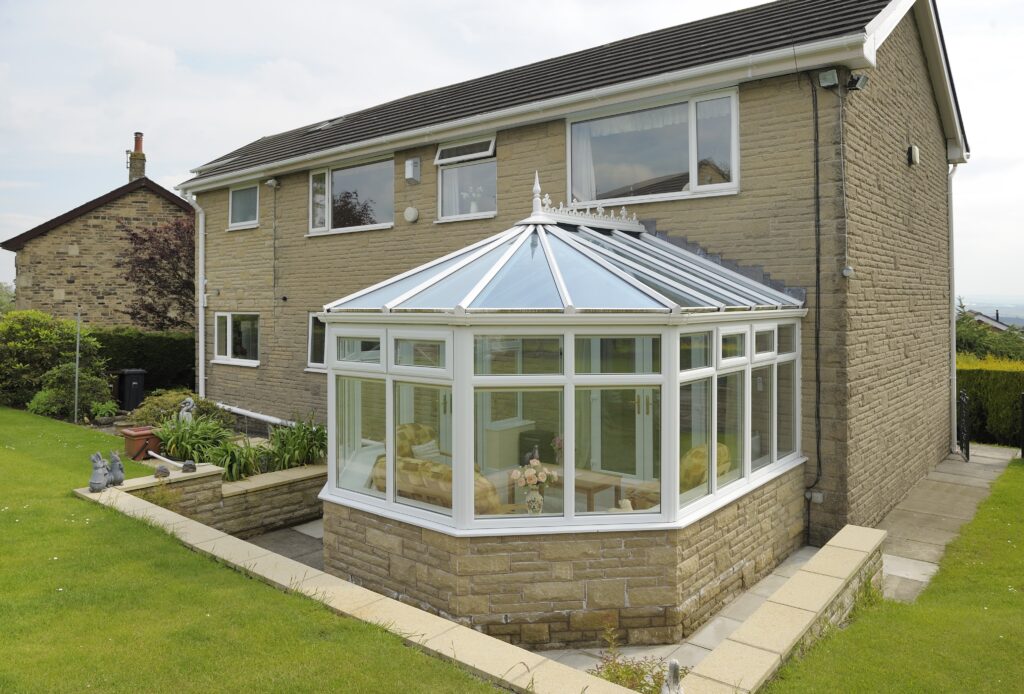
Make sure your conservatory blends with the rest of the property
Your conservatory design should be informed by the architecture and decor of your home. You don’t want your conservatory to look out of place, either too modern or old-fashioned. It should blend seamlessly, while still making a statement. The design should also be sympathetic to the buildings in the area. This is particularly important in conservation areas and near listed buildings.
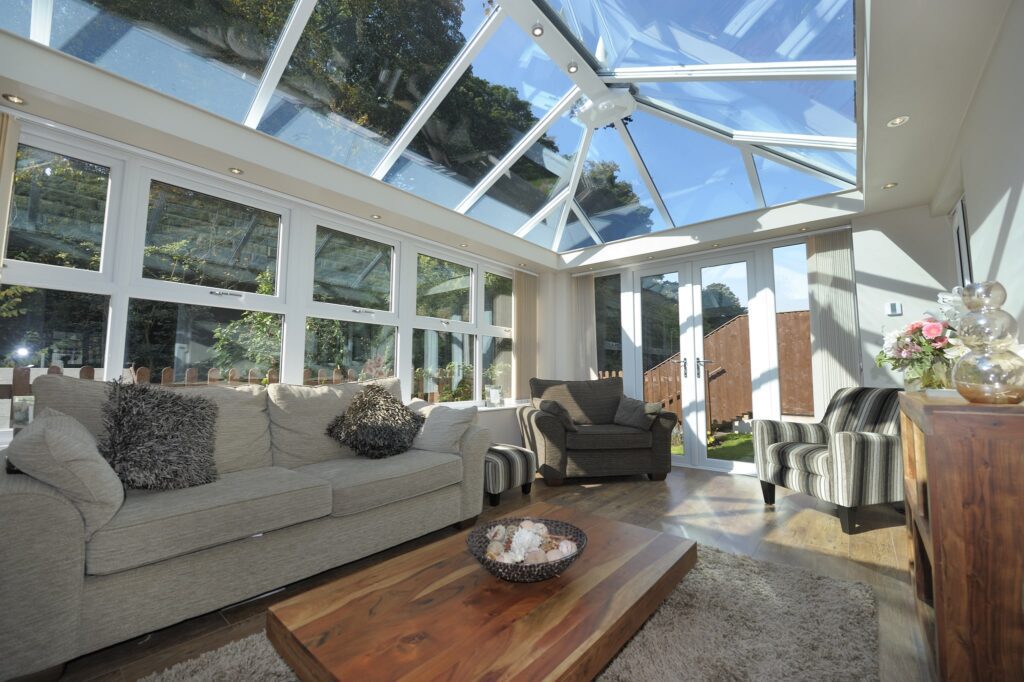
Consider installing energy-efficient features
Investing in making your conservatory as energy-efficient as possible will pay dividends in the future. Double, triple or low-E glass will improve insulation, keeping the room warmer for longer during the winter months. Conservatory roofs that incorporate solar panels, such as our innovative Activ Solar designs can help you harness the power of the sun to provide energy-efficient heating while blocking harmful UV rays.
Features such as underfloor heating can help you control the temperature, making the space suitable for year-round use. The more you use your conservatory, the better an investment it becomes.
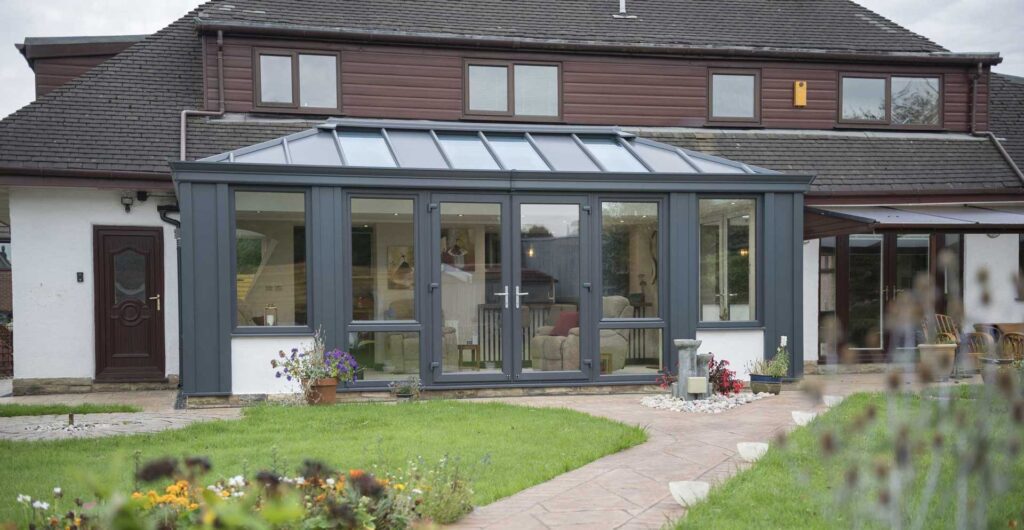
Consider How It Will Look In Your Garden
Similar to point two, you also need to consider the current appearance of your garden and how a new conservatory will fit in and enhance it. This may require you to tidy up your garden.

Should you consider an orangery?
An orangery is not a type of conservatory, as sometimes thought, but a predominantly brick or metal building with large windows and, often, a flat roof. The confusion comes as they are a popular extension and often perform the same functions as a conservatory. They are designed to blend more seamlessly with the architecture of your main property and are often used to extend kitchens.
Whether an orangery is a better choice for you will depend on the look you are going for, the space available, and the intended function. Orangeries are often warmer than conservatories in the winter but lack panoramic views. Orangeries also tend to be more expensive than conservatories.
Takeaways:
In conclusion, a conservatory is a good option if you wish to add value to your property and it hasn’t hit its ceiling price. The value added will vary depending on the size, style and complexity. Remember to ensure the design fits with the existing architecture of your home and the surrounding area. Use high-quality materials and ensure the conservatory is professionally installed. Confirm that you don’t need planning permission from your local authority and inform your neighbours in plenty of time that they may experience some disruption. Plan your budget, including furniture and accessories, before you go ahead and get a couple of quotes to compare before purchasing.
How Manchester Window Factory can help choose your conservatory
At Manchester Window Factory, we offer a wide range of high-quality conservatories, designed to meet your needs. Use our bespoke service to customise glazing options, hardware, and security systems. We’re more than happy to give advice, and you can get in touch via phone, email or face-to-face at our Altrincham showroom.
Our in-house team of fitters can also install your brand-new conservatory or replace elements of an existing structure.
FAQS
On average, it takes three to five weeks to build a conservatory, depending on its size, location, and complexity of design. A small, simple conservatory could take less time, but if access is an issue, you may need to allow more time.
Yes, old conservatories can sometimes be sold for parts or materials, especially glass and aluminium frames. If you have a prefab conservatory, you may be able to disassemble it and sell it, depending on the condition. You can also sell or give away items such as old conservatories on buy, sell, swap community groups or sites such as Freecycle.
They can. While modern, well-maintained conservatories usually add value, the reverse is true of poorly designed, outdated or inadequately maintained conservatories. An ugly conservatory can be offputting to a potential buyer, even being a deal breaker in going ahead with the purchase in extreme circumstances. A buyer does not want to have to pay for the removal and replacement of an old conservatory and will factor that into their final decision on whether to make an offer. If they do, they may deduct the potential removal and disposal costs and go in low.
This refers to a rule allowing conservatories that have been in place for over four years without planning permission (where required) to become immune from enforcement action.
In most cases, adding a conservatory to your existing property will not require planning permission. The vast majority of conservatories are covered by permitted development rights, but there are stipulations to be aware of.
For example, your conservatory can’t be separated from the main property by an external wall or door to fall under permitted development rights.
Size and Height Restrictions
- Your conservatory must be less than 30 square metres in floor area
- The conservatory can not extend further than half of the land around the original framework
- Your conservatory can only be as high as your existing roof.
- If your conservatory can’t be taller than three metres if it comes within two metres of a boundary
- You should leave 50% of your garden or yard untouched
Listed Buildings & Conservation Areas
You may also require planning permission if your property is a listed building or if you live in a conservation area.
Impact on Neighbours
Permitted development rights work on the understanding that you are not harming your neighbours’ property. The Neighbour Consultation Scheme affords your neighbours the right to object to any extensions they feel may negatively impact their property.
Always check with your local authority and inform your neighbours of any building work you intend to have done.
How to Get in Touch
If you want to find out more about creating customised windows, doors, and conservatories, please don’t hesitate to get in touch. You can call us on 0161 976 4739, use our contact form or chat with us via the chat button at the bottom right of this website. If you live locally, you can also visit our Altrincham showroom, and check our contacts page for up-to-date opening hours.
We look forward to hearing from you!
